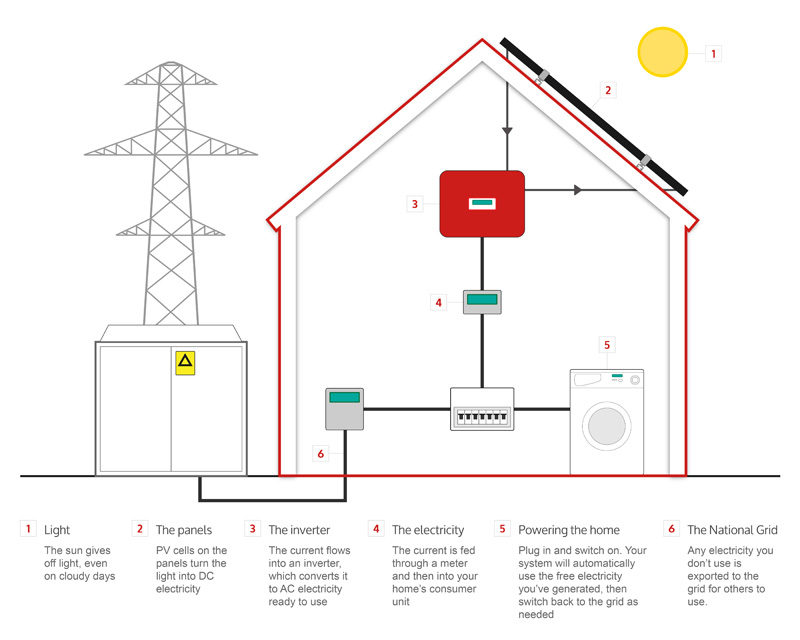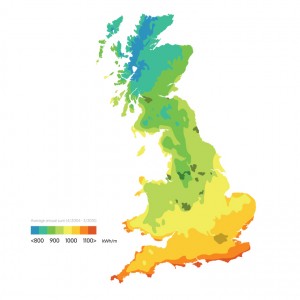One of the most common questions we are asked is how do solar panels work turning sunlight into AC electricity ready to consume onsite.
Every solar PV system is made up of several components: solar panels (or ‘modules’), an inverter, a meter and your existing consumer unit.
In this guide, we will concisely explain how solar panels work with helpful diagrams and a step by step explanation.
How solar panels work
Solar Energy Diagram
This solar panel diagram shows how solar energy is converted to create free electricity for your business or home.
How solar panels work step by step
- The sun gives off light, even on cloudy days.
- PV cells on the panels turn the light into DC electricity.
- The current flows into an inverter, which converts it to AC electricity ready to use.
- The current is fed through a meter and then into your home’s consumer unit.
- Plug in and switch on. Your system will automatically use the free electricity you’ve generated, then switch back to the grid as needed.
- Any electricity you don’t use is exported to the grid for others to use.
What is solar radiation?
Solar radiation is most commonly known as daylight and powers solar photovoltaic panels. However, not all locations receive the same amount or concentration of solar radiation. Think of the strength of the sun in Scotland versus Spain, for example.
Solar Radiation Map UK
This is the same in the UK; some locations receive more irradiation than others. According to PVGIS (the European Commission software to estimate energy production from PV panels), the difference in the amount of electricity produced from a 4 kWp system on a south-facing 30 degree pitched roof in John O’Groats and Lands End is 840 kWh/year.
These calculations take into account the total irradiation received over the course of the year under different conditions. Where direct solar radiation is not blocked by clouds, we experience it as sunshine. Where it is blocked by clouds or reflects off other objects, we experience this as diffused light. Diffused light will produce less power than unblocked light because it has a lower concentration of solar radiation.
What are Solar Panels Made of?
Solar panels, the building blocks of solar energy systems, are primarily made of silicon, a semiconductor that is the second most abundant element on earth. Silicon is used to create solar cells, which are the components in solar panels that convert sunlight into electricity.
These solar cells are usually arranged in a grid-like pattern on the surface of the panel and are protected by a glass casing for durability and longevity.
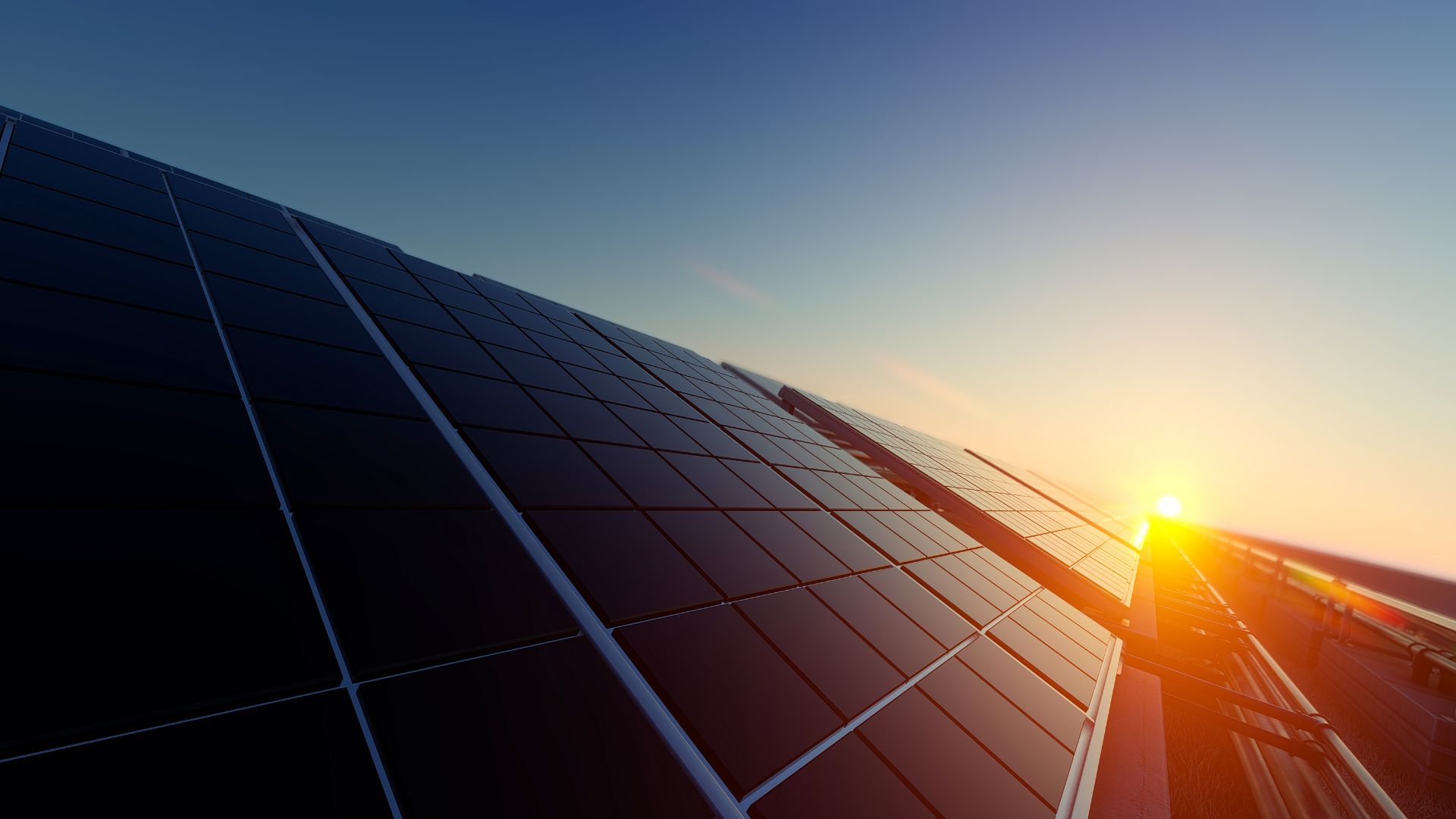
How Do Solar Panels Work to Generate Electricity?
Solar panels operate on a principle known as the photovoltaic (PV) effect. When sunlight hits a solar cell, it knocks electrons loose from their atoms, generating a flow of electricity. This is achieved through the creation of an electric field, which occurs due to the presence of two different types of silicon within the cell—one that’s positively charged and one that’s negatively charged.
Once the electric field is set up, electrons are driven towards the conductive metal plates on the sides of the cell, creating an electrical circuit. When electrons flow through such a circuit, electricity is produced.
There are two main types of solar panels Monocrystalline vs Polycrystalline. Check out our full guide on Monocrystalline panels today!
How Many Solar Panels Does It Take to Power a House?
The number of solar panels required to power a home depends on several factors, including the household’s energy consumption, the climate/location, the efficiency of the solar panels, and the panel’s wattage. On average, a typical American home might need between 20 to 25 solar panels to fully offset their electricity bill with solar.
However, it’s essential to conduct a detailed energy audit to determine the specific needs for each unique situation.
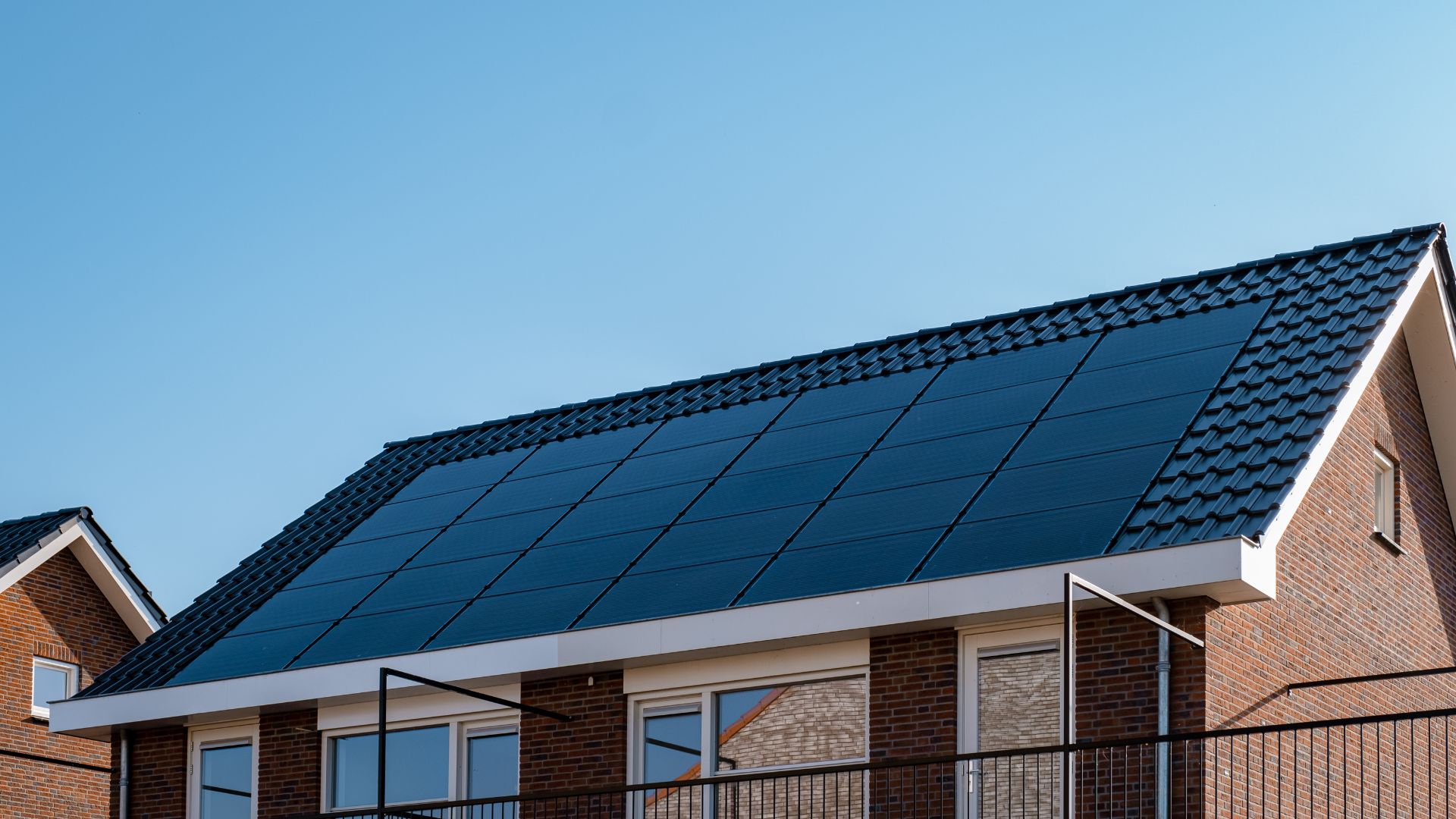
How Do Solar Panels Work With Your Electric Bill?
Solar panels can significantly reduce your electric bill since you’ll be generating your own electricity. The amount you save will depend on the size of your solar system and your electricity usage. If your solar panels produce more electricity than you use, your utility may credit you for the excess power generated, which is sent back to the grid—this is known as net metering.
Your electric bill will thus reflect the net amount of electricity you consume minus what your solar panels generate.
Need solar panels for your commercial property? Get in touch today.
Do I Need to Tell My Electricity Supplier I Have Solar Panels?
Yes, it’s essential to inform your electricity supplier if you install solar panels. There may be regulatory requirements or incentives available, and your supplier will need to make arrangements for net metering. Also, depending on your location, there might be technical specifications and safety standards that your solar panel system needs to meet.
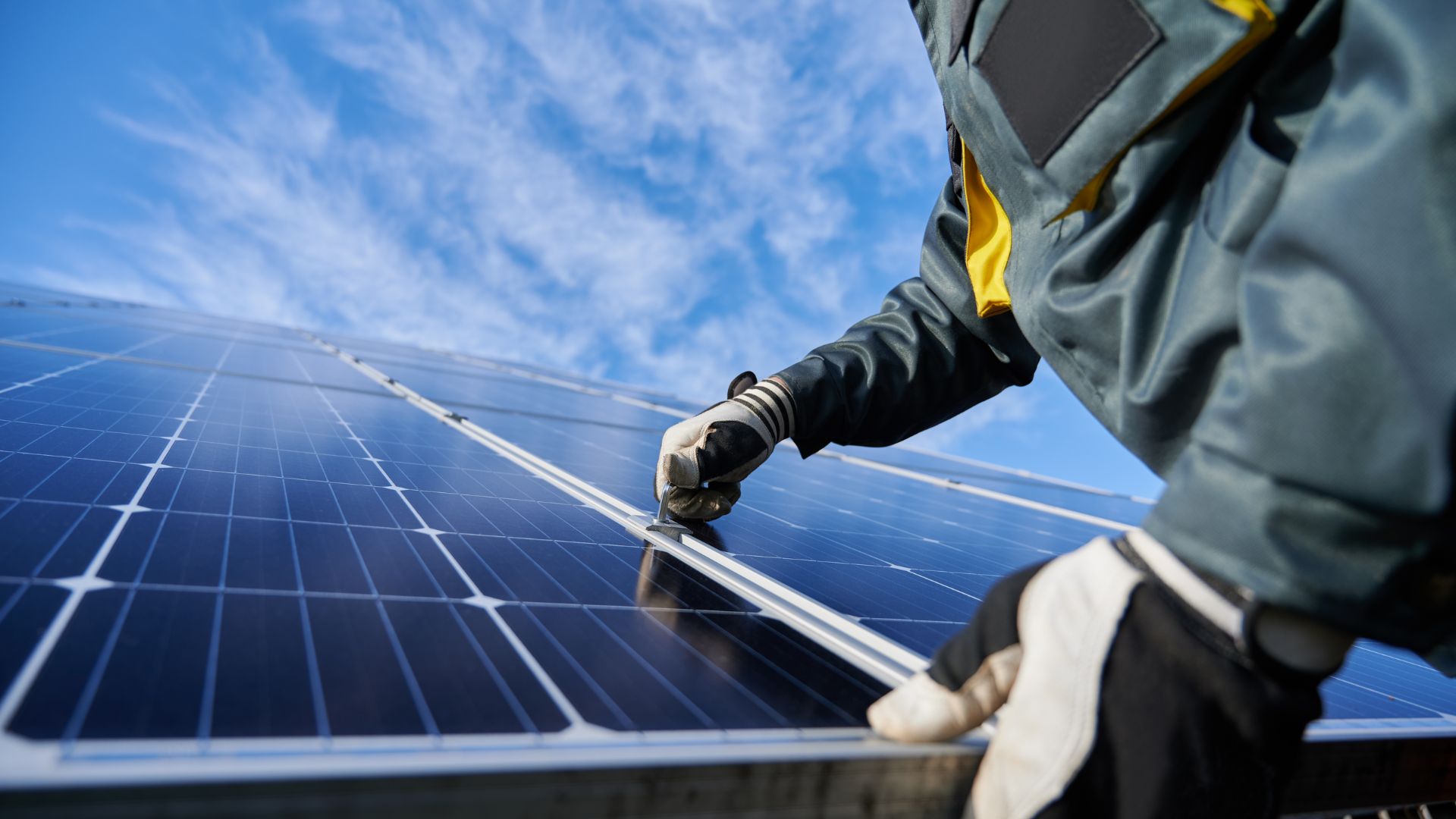
Can Solar Panels Store Energy?
Solar panels by themselves cannot store energy. However, they can be paired with solar batteries that store energy for later use. These batteries allow you to keep the surplus energy your solar panels produce during the day and use it at night or during a power outage, enhancing your energy independence and security.
What Does the Inverter Do?
The inverter is a crucial component of the solar energy system. Solar panels produce direct current (DC) electricity, but most homes and electrical grids operate on alternating current (AC) electricity. The inverter’s role is to convert the DC electricity from the solar panels into AC electricity that can be used in your home or fed back into the grid.
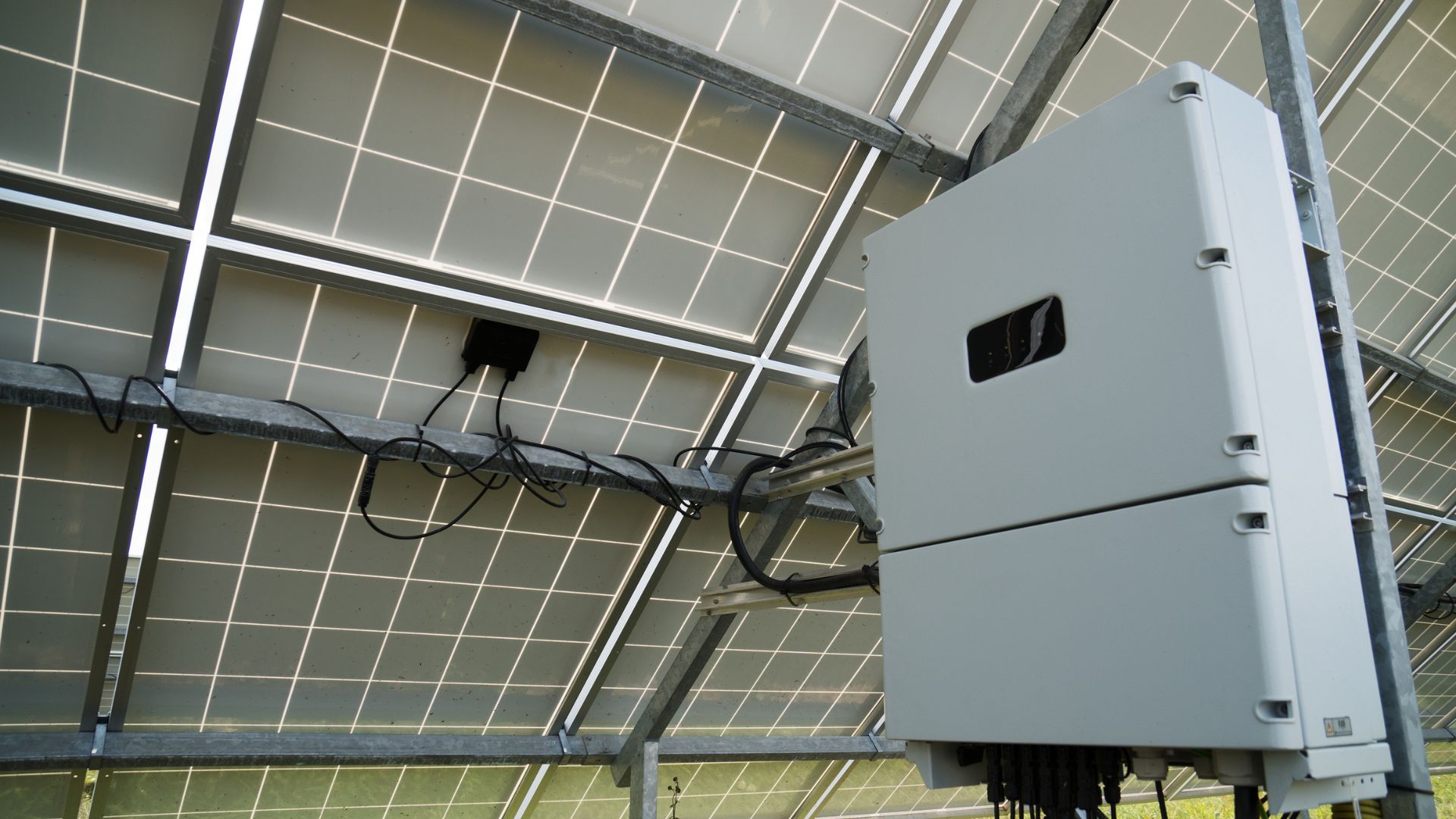
What are the Advantages of Solar Energy?
Solar energy presents numerous advantages. It’s a clean, renewable source of energy that reduces reliance on fossil fuels, thus minimizing greenhouse gas emissions and combating climate change. Solar power can also reduce your electricity bills, increase energy independence, and is relatively low maintenance after installation.
Furthermore, many governments offer financial incentives to offset the initial installation costs.
Do Solar Panels Work on Cloudy Days?
Solar panels are most effective in direct sunlight, but they do still work on cloudy days. Although the efficiency of solar panels decreases in cloudy conditions, they can still produce about 10-25% of their rated capacity, depending on the thickness and density of the cloud cover. Find out more about how solar panels work during winter.
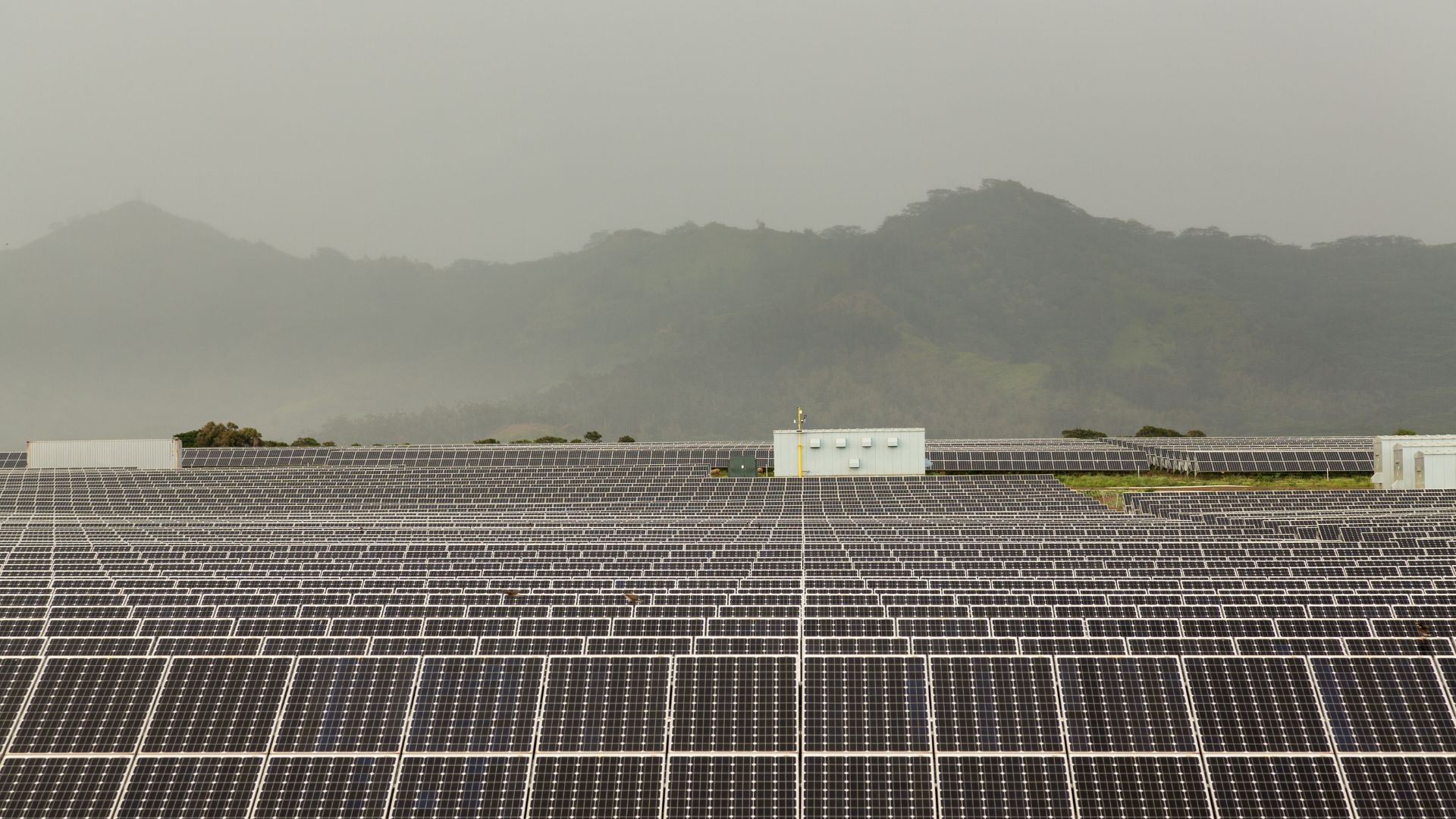
How Exactly is Electricity from Solar Energy Produced?
The process of converting sunlight into electricity begins with the absorption of photons (light particles) by solar cells. This absorption creates an electrical current as electrons are displaced. The current then flows through the electrical circuit built into the solar panel.
Multiple solar panels are wired together to form a solar array, increasing the amount of electricity that can be generated. This electricity is then inverted from DC to AC and can power your home or business, contribute to the grid, or charge a storage battery. Learn more about how solar panels work.
Find out more about the benefits of solar panels.
Lower your organisation’s energy bills and reduce your carbon footprint today. Learn more about the bespoke solar panel systems that we can design, build and maintain for your business today.

